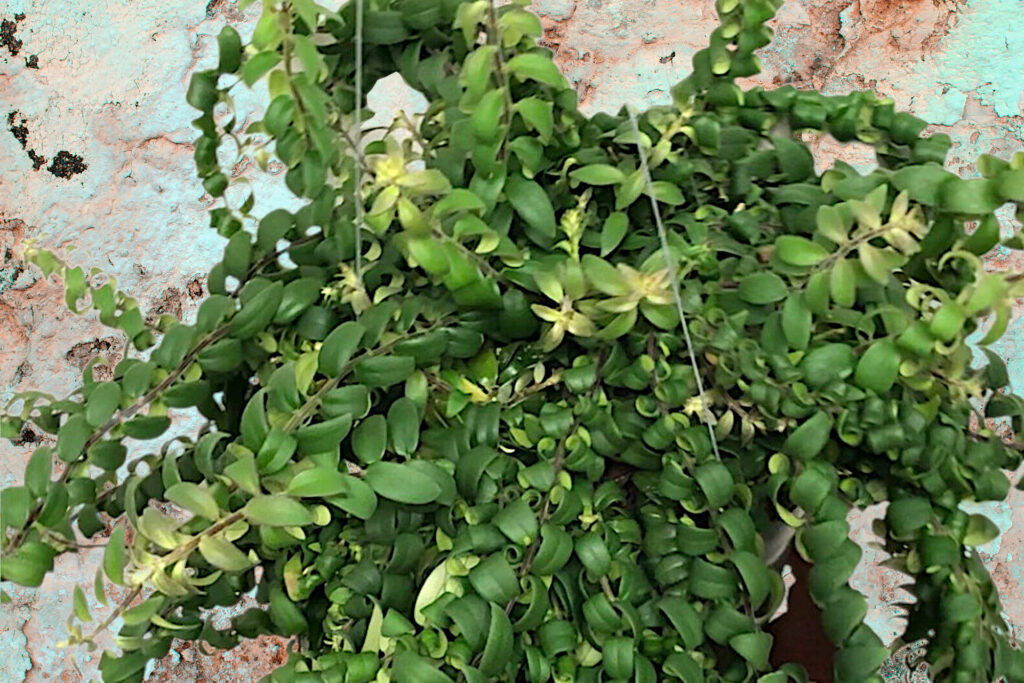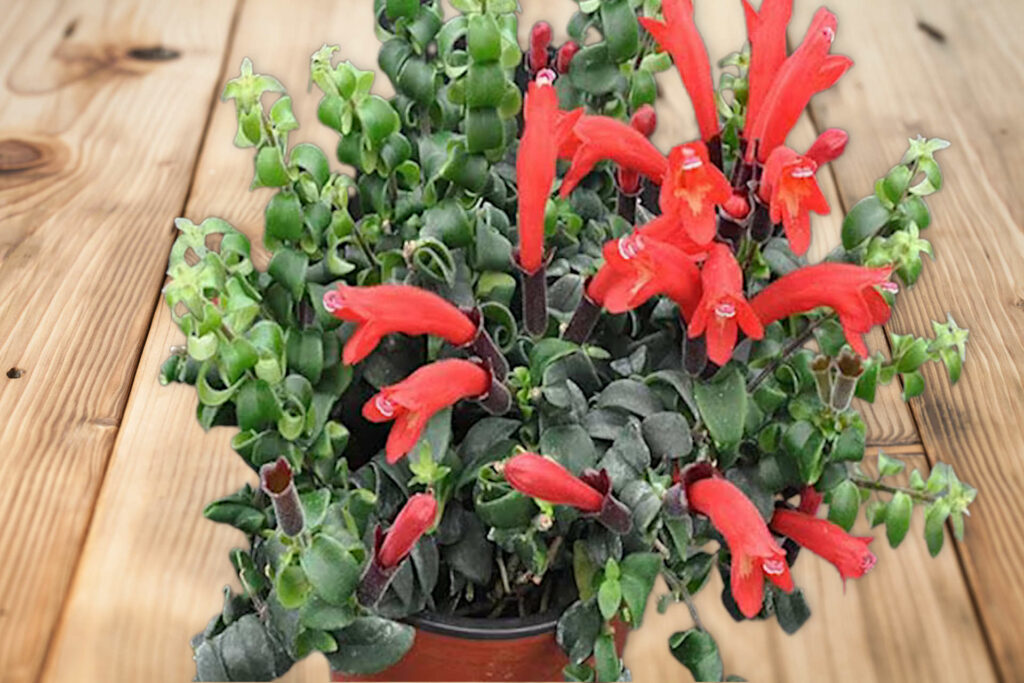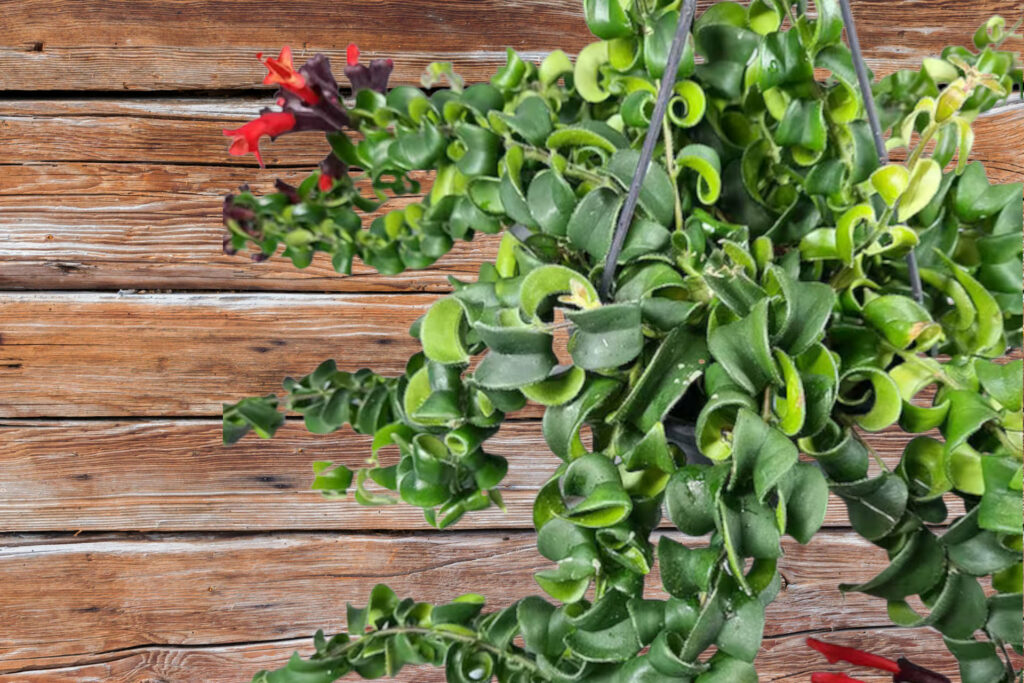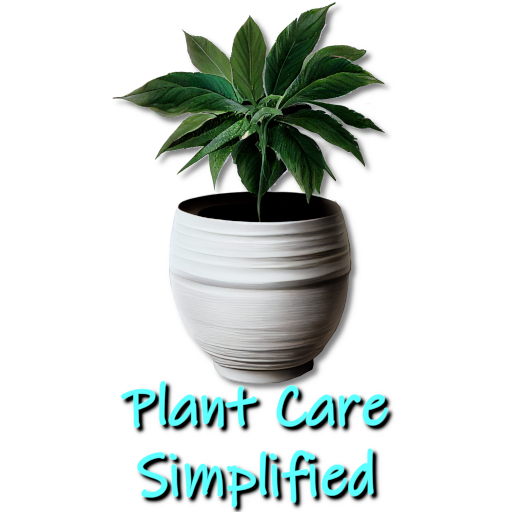Curly Lipstick Plant: Unraveling the Mystique of The Fascinating Twist
Jess is a true horticulturist whose passion for plants has led her to become an expert in tropical houseplants. Jess was born and raised in...
The Aeschynanthus radicans variety, known as Curly Lipstick Plant, is a stunning and unique specimen that brings a vibrant energy to any space. With its origin in the lush rainforests of Southeast Asia, it embodies an exotic charm while also serving as an appealing option for houseplant enthusiasts and interior decoration.
Below, we will explore some of the many aspects of the plant that make them genuinely awe-inspiring flora - its distinctive features and characteristics (including their symbolism); natural habitat and growth requirements; and last but not least, how it contributes to enhancing our living spaces through its aesthetic qualities. By providing comprehensive details about each topic area, we aim to enlighten readers on what distinguishes this epiphytic plant from other common houseplants.
Southeast Asian Origins

The Curly Lipstick Plant is a variety of Aeschynanthus radicans that finds its roots in the tropical rainforests of Southeast Asia. Countries such as Thailand, Malaysia, Indonesia, and the Philippines boast this visually stunning plant species in their diverse flora. Its captivating visual appeal can be attributed to the region's warm and humid climate that nurtures its growth.
Indigenous Splendor
Indigenous communities have long appreciated the Curly Lipstick Plant for its ornamental value. For centuries, they have skillfully incorporated them into their dwellings or selected them during festive events as alluring decorative elements. The striking hues of these plants enhance the ambiance of celebrations while also bestowing a touch of cultural identity to communal spaces.
Embellishing Vernacular Architecture
Curly Lipstick Plants possess a distinctive charm that these local communities have traditionally exploited to bedeck their homes' facades or interiors, enlivening their living spaces with vibrant natural elements.
Common Festival Attractions
During various cultural festivities, these unique plants prominently feature decorations or ornamentation reflecting traditional aesthetics and bolstering community bonding through shared horticultural practices.
Through this deep-rooted connection between culture and nature evident in indigenous societies across Southeast Asia, the Curly Lipstick Plant has been gradually propelled into global recognition among houseplant enthusiasts and eco-conscious interior designers alike!
Unraveling the "Curly Lipstick Plant" Moniker
Spiraling foliage is the root of the "curly" descriptor, but several other features make this plant particularly distinctive.
Unraveling the Twist:
Linear to ovate (oval) leaves distinguishing the Aeschynanthus radicans, the Curly Lipstick Plant exhibits an alluring curvature on its edges, exuding a slightly spiraled appearance which is responsible for its "Curly" nomenclature.
Encased in a dark green shade adorning their upper surface and accompanied by an enchantingly lighter green underside, although there are rare plant specimens that display pink and white coloring and veining through variegation, these leaves enhance visual appeal with remarkable grace.
Leaf Conglomeration:
A collective of individual leaves or groups artistically arranged along sinuous stem pathways, these verdant foliage entwine captivatingly, glorifying the plant's aesthetics through a breathtaking curling effect.
Demystifying the "Lipstick Plant" Nomenclature
A simple glance at the flora produced by this stunning plant is enough to appreciate its nomenclature. Efflorescent bursts of bright reds interspersed alongside bold oranges and radiant yellows characterize the blooms adorning Aeschynanthus radicans, creating an arresting contrast immersed within lush leafy surroundings that drive home its undeniable lipstick appeal.
Structural Exposition of the Curly Lipstick Plant :
Tubular silhouettes harboring intricate floral anatomy are reminiscent of enticing lipstick tubes emerging from their protective casing. As one end unfurls to reveal the reproductive crux - stigma and stamens - it further reinforces its moniker as a stunning "Lipstick Plant."
Diving into Botanical and Taxonomical Classifications: Gesneriaceae Family Unveiled
A critical aspect of understanding the Curly Lipstick Plant is examining its botanical classification. Belonging to the Gesneriaceae family, this diverse group of flowering plants offers an exciting variety of forms and colors. Known for its horticultural appeal, the family closely relates to African violets and Gloxinia species, bestowing remarkable traits upon its fellow members.
Delving Deeper into the Aeschynanthus Genus
The Curly Lipstick Plant's distinct charm stems from its genus, Aeschynanthus. With over 150 species under its umbrella, the assortment it provides is truly bewitching. The disparity within this genus can be seen in varying flower shapes, sizes, and hues - each adding to the enchanting quilt-work that defines these captivating tropical plants.
Exploring these classifications ensures a profound appreciation for Aeschynanthus radicans or Curly Lipstick Plant's unique characteristics that mesmerize houseplant enthusiasts worldwide. This intrinsic understanding can inspire gardeners to discover further the untapped potential within other striking members of this fascinating genus.
The Natural Environmental Habitat of the Curly Lipstick Plants
As we have mentioned, the Curly Lipstick Plants originate from the verdant rainforests that stretch across Southeast Asia, with the most varieties of Aeschynanthus radicans thriving in jungles teeming with rich biodiversity, which provides an ideal environment for their unique growth patterns and captivating flowers.
The Humidity Crux: Flourishing in a Terrestrial Wonderland
The rainforests that the Curly Lipstick Plant naturally thrives in offer a high level of humidity that is essential in maintaining the plant's delicate balance.
Surrounded by various flora and fauna endemic to these regions, Curly Lipstick Plants find solace amidst the moist atmosphere, which fosters their healthy foliage and blossoms.
Epiphytic Adaptations: Perching on Branches and Clinging to Rock Creases
As part of nature's astoundingly diverse repertoire of plants with unique growing preferences, Curly Lipstick Plants have evolved as epiphytes—a particular type of species that thrives on other structures without depriving them of nutrients or damaging them in any way.
The aerial roots of Aeschynanthus radicans varieties draw sustenance and moisture from their surroundings instead, establishing secure footholds onto tree trunks or branches where they can grow undisturbed while basking in filtered sunlight distributed through the leafy canopy above.
Moreover, these adaptable plants have been known to nestle within rock fissures or crevices found along riverside cliffs at times—demonstrating their innate versatility and resourcefulness when seeking out favorable locations for development throughout its native habitat.
For those wishing to cultivate Curly Lipstick Plant indoors or enliven garden spaces outside its natural range across Southeast Asia—understanding this inherent aspect of its preferred environment is paramount to ensure its success and longevity.
Essential Guidelines for Caring for A Curly Lipstick Plant in The Home

Bringing the natural beauty of the Curly Lipstick Plant into the home has become fashionable. Generally, despite their tropical origins, they are easy plants to care for. If you pay attention to the factors listed below, you should be able to maintain a healthy, thriving plant.
Perfecting the Soil Mixture
Achieving an ideal soil composition significantly enhances plant growth. By incorporating a well-draining, loose, and porous substrate rich in organic matter, similar to their native rainforest habitat, horticulturists ensure optimal nutrient absorption and aeration - vital elements for robust root development.
Meanwhile, blending ingredients such as peat moss or coco coir, perlite or pumice stone, and fine bark creates a perfect replication of the plant's natural growing conditions.
- Emphasize a well-draining, airy, and moisture-retentive potting mix.
- Recommended components: equal parts peat moss, perlite or pumice, and orchid bark.
- Occasional addition of organic matter (compost or worm castings) can provide necessary nutrients.
Optimizing Light Exposure for Healthy Growth
A vital component in nurturing the vigorous development of the plant lies in furnishing appropriate illumination. As native dwellers of sun-drenched rainforest canopies, these unique flora thrive under bright but filtered light. By furnishing dappled sunlight or indirect brightness, cultivators mimic their natural habitat and encourage lush growth along with vibrant floral displays.
- Emphasize bright but indirect sunlight conditions.
- Southern- or eastern-facing windowsills are ideal locations indoors.
- In outdoor settings, position the plant under a shaded tree or pergola to avoid direct sun rays.
Balancing exposure duration and intensity becomes essential, as excessive direct sunlight leads to scorched foliage while insufficient radiance stifles blooming potential.
Regulated Watering Practices for Robust Foliage and Blooms
Implementing a disciplined watering routine is crucial. Providing the optimal amount of moisture helps mimic their natural rainforest habitat, fortifying robust growth and promoting dazzling blooms.
Tailoring watering patterns to factors such as seasonal changes, pot size, and soil mix aids in averting over- or under-watering mishaps that can lead to negative impacts like root rot or wilted leaves.
A keen vigilance on soil moisture levels allows these captivating plants to maintain their splendor while also encouraging consistent development throughout their life cycle—rendering them as bewitching decorative elements within one's interior space.
- Establish a watering schedule that maintains slight soil moisture without excessive dampness.
- Advocate thorough watering till water seeps through drainage holes.
- Never allow the soil to dry out completely or remain soggy; both can lead to root rot or wilting leaves.
Creating Humidity Microclimate for A Curly Lipstick Plant
Catering to the natural preferences of the Aeschynanthus radicans varieties is crucial for its thriving and vigorous growth. One major factor is replicating its native rainforest environment by creating a humidity microclimate in your home or indoor garden space and very simple to do just using a tray, water, and some lightweight clay aggregate.
Providing this ideal setting fosters improved foliage vibrancy and promotes robust flowering, ensuring that your plant continues to evoke that spectacular visual display reminiscent of its Southeast Asian roots.
Moreover, sustaining a higher humidity environment reduces stress on the plant, mitigates undesirable pest infestations like spider mites, and keeps the leaves lustrous and healthy.
Maintaining Plant Shape With Timely Pruning Procedures

Pruning the Curly Lipstick Plant offers a myriad of benefits that contribute to its overall health, vitality, and allure. First and foremost, removing discolored or damaged leaves redirects the plant's resources toward nurturing healthy foliage and producing vivacious blossoms. This ensures robust growth while preventing potential issues like disease or pest infestations.
Furthermore, when you prune by pinching back new growth tips, you are shaping your plant in a way that bolsters its compact development and branching. In turn, this gives rise to an enchanting cascading effect – the quintessential characteristic of an entrancing Curly Lipstick Plant display.
Yet another advantage of regular pruning is how it discourages leggy or straggly growth patterns, which can compromise structural integrity. Instead, pruning fosters a strong stem system capable of supporting vibrant foliage adorned with its striking lipstick-like flowers.
Lastly, by adhering to seasonal pruning routines - usually during late winter or early spring - you'll sync your plant care practices with the plant's natural cycle as it emerges from dormancy ready for vigorous growth. This alignment ultimately maximizes the Curly Lipstick Plant's potential to flourish into an extraordinary specimen in your indoor garden or interior.
While pruning, you can also take the opportunity to propagate your lipstick plant. Although two different processes, it doe provide a great opportunity to take cuttings or even use layering to increase the number of curly lipstick plants in your collection.
Displaying Your Curly Lipstick Plant in All its Glory
A Curly Lipstick plant can make a dramatic visual contribution to any home. Below we have listed a few ideas on how to display them.
Mounted Pots: Emulating a Natural Environment
To mimic the Curly Lipstick Plant's native habitat, choosing mounted pots is an advantageous option. By using materials like bark or cork, one can effectively simulate the epiphytic growing conditions commonly found in the rainforests of Southeast Asia. Ensuring adequate drainage and attaching the plant to the mounting surface with non-abrasive ties allows for ample airflow, promoting healthy root development.
Hanging Baskets: Enhancing Aesthetic Appeal
The Curly Lipstick Plant's cascading vines flourish when grown in hanging baskets. This growth habit accentuates its unique foliage and brilliantly-colored blossoms while offering a visually captivating display for both indoor and outdoor settings. Select a well-draining basket, such as those crafted from wire or natural fibers, lined with sphagnum moss or coconut coir for optimal results. These materials aid in maintaining ideal moisture levels without waterlogging the roots.
Trellises: Creating Vertical Landscapes for Your Curly Lipstick Plant
For enthusiasts seeking novel ways to display their Curly Lipstick Plant collection, trellises present an opportunity to create vertical gardens filled with vibrant colors and lush foliage patterns. Anchoring them securely into a pot filled with loose potting mix provides proper support as they climb upwards in search of sunlight exposure. To train your plant onto a trellis, gently wind its vines around the structure while being mindful of delicate tendrils that could suffer damage during handling.
Cluster Pots and Cascading Vine Variations
Incorporating cluster pots into your planting strategy not only enhances visual appeal but also cultivates an optimal environment for multiple specimens to thrive together, generating beautiful cascading vine formations—an aspect particularly striking when these plants are suspended from overhead structures in clusters allowing foliage and flowers to drape elegantly downwards—an impressive focal point within any interior space.
Evaluating each potting consideration along with specific care requirements will contribute significantly towards achieving successful growth outcomes while also elevating the aesthetic charm of the Curly Lipstick Plant. Whether selecting mounted pots, hanging baskets, or trellises, a thoughtful approach will maximize both the plant's health and overall impact in enhancing interior spaces.
Further Reading
- Iowa State University: Aeschynanthus radicans
- University of Georgia: Gardening in Containers Using Tropical Plants
Videos
Jess is a true horticulturist whose passion for plants has led her to become an expert in tropical houseplants. Jess was born and raised in South East Asia surrounded by lush jungles and lush botanical gardens. This environment prompted her to develop a love for all things green and growing. A move to the UK helped her plant care skills and improved her knowledge Her commitment to her craft and her dedication to her customers has earned her a reputation as one of the best in the business. She continues to inspire others with her love for nature and the environment.Bio Page
More Posts